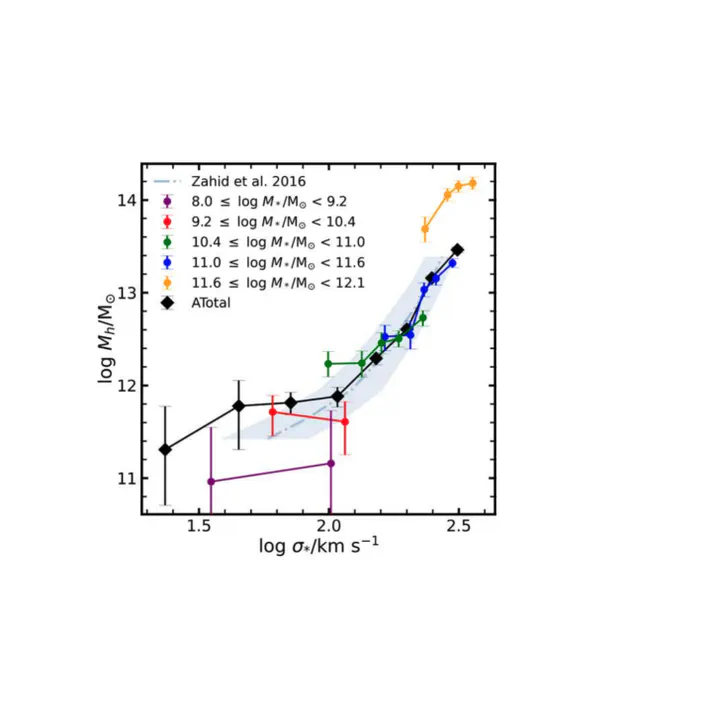Halo Mass-observable Proxy Scaling Relations and Their Dependencies on Galaxy and Group Properties
Dec 27, 2023· ,,,,,,,·
0 min read
,,,,,,,·
0 min read
张子文
Huiyuan Wang
Wentao Luo
Houjun Mo
Jun Zhang
Xiaohu Yang
Hao Li
Qinxun Li
 Image credit: Ziwen Zhang
Image credit: Ziwen ZhangAbstract
Based on the DECaLS shear catalog, we study the scaling relations between halo mass (Mh) and various proxies for Sloan Digital Sky Survey central galaxies, including stellar mass (M*), stellar velocity dispersion (σ*), abundance-matching halo mass (MAM), and satellite velocity dispersion (σs), and their dependencies on galaxy and group properties. In general, these proxies all have strong positive correlations with Mh, consistent with previous studies. We find that the Mh–M* and Mh–σ* relations depend strongly on group richness (Nsat), while the Mh–MAM and Mh–σs relations are independent of it. Moreover, the dependence on the star formation rate (SFR) is rather weak in the Mh–σ* and Mh–σs relations, but very prominent in the other two. σs is thus the best proxy among them, and its scaling relation is in good agreement with hydrodynamical simulations. However, estimating σs accurately for individual groups/clusters is challenging because of interlopers and the requirement for sufficient satellites. We construct new proxies by combining M*, σ*, and MAM, and find that the proxy with 30% contribution from MAM and 70% from σ* can minimize the dependence on Nsat and the SFR. We obtain the Mh–supermassive black hole (SMBH) mass relation via the SMBH scaling relation and find indications for rapid and linear growth phases for the SMBH. We also find that correlations among Mh, M*, and σ* change with M*, indicating that different processes drive the growth of galaxies and SMBHs at different stages.
Type
Publication
APJ